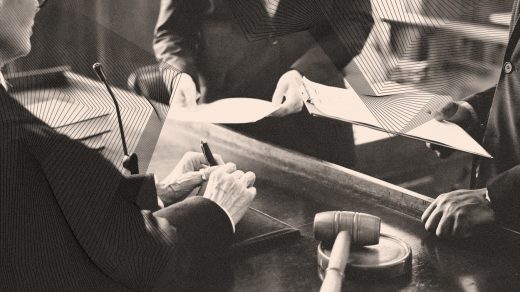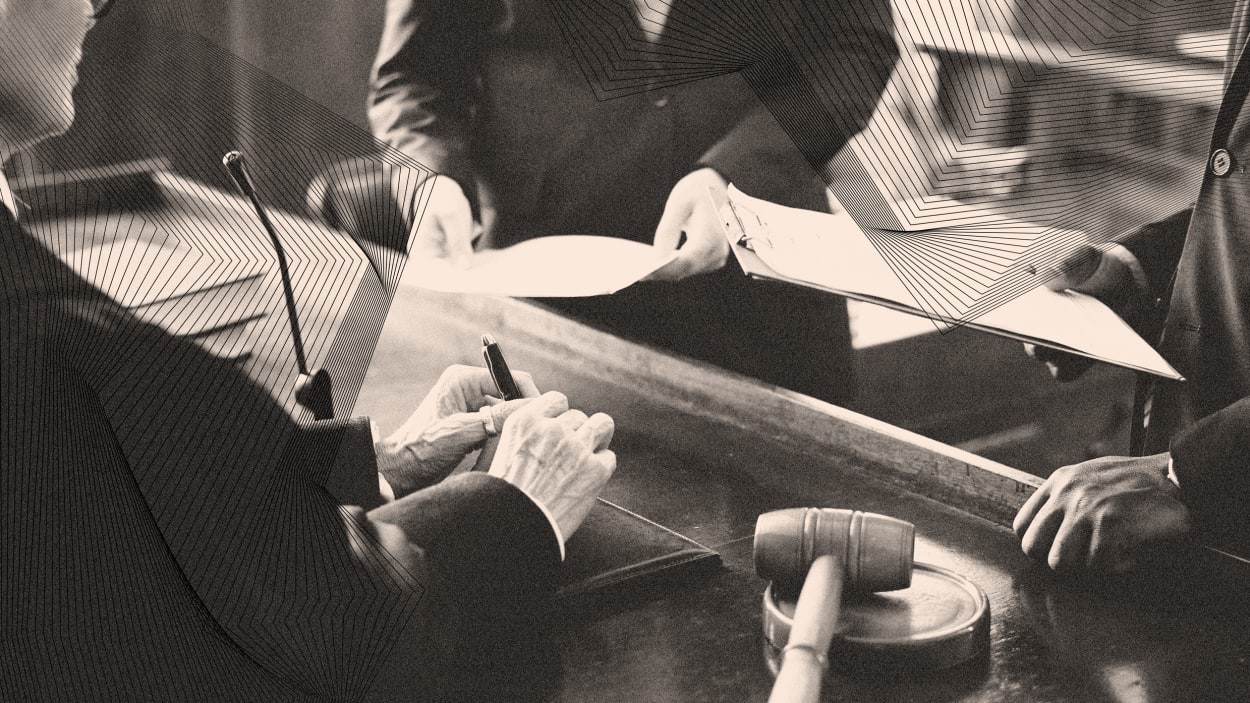Sam Bankman-Fried says he can explain everything
Sam Bankman-Fried’s defense case is finally being presented. The crux of that case is, essentially, that he has an explanation for everything.
After weeks of prosecution testimony in which the defense neither scored points nor sold a story, Bankman-Fried took the stand Friday to give his version of events.
Bankman-Fried is presumably carefully coached. During breaks in testimony, his parents rushed to a small conference room with a fleet of people carrying evidence boxes, laptops, and files; they have hired Risa Heller, the well-known communications advisor who is said to have placed the “new face of Elizabeth Holmes” story with The New York Times.
Bankman-Fried showed a marked improvement from his behavior on the stand (November 08, 2023), during which he gave roaming, technical answers to questions that were not asked. Today, he was just as pleasant and seemingly accommodating, but clearer in his answers. He was especially effective when he told the story of his founding of FTX and Alameda—better than when he veered into the kind of blurred-word finance-speak he is prone to using (“market maker,” “true up,” “borrows”).
The prosecutor who is expected to begin cross-examination midday Monday, Danielle Sassoon, has been very sharp on cross, and said she expects to conduct “substantial cross-examination.” When he’s getting lobs from his lawyer, Bankman-Fried may be able to return most balls; volleys from the prosecution may prove harder to hit back.
Bankman-Fried began with a broad overview of his goal for FTX, along with an earnest-sounding apology. “We thought that we might be able to build the best exchange on the market,” he said. “It turned out, basically, the opposite of that. A lot of people got hurt,” and the company went bankrupt. When his lawyer, Mark Cohen, asked if he defrauded people, Bankman-Fried said, “No, I did not.”
From his hairstyle to the denials of criminal behavior, here’s what else Bankman-Fried said Friday in response to testimony elicited in the prosecution’s case:
On whether he thought his Alameda hedge fund could borrow from FTX:
“In general, FTX didn’t have restrictions on funds that were borrowed,” he said. “We didn’t care if a user withdrew funds and used them to buy muffins, to pay business expenses, or anything else,” as long as their assets were higher than their liabilities on the exchange.
On Alameda being granted a $65 billion line of credit on FTX:
He said he was not aware that it had a “theoretical maximum” but knew that in 2019 Alameda had taken out millions in its credit line on FTX, and by 2022 that was around $2 billion. After discussing raising the line of credit with former FTX executives Gary Wang and Nishad Singh, Bankman-Fried said his “understanding at the time was that they implemented some feature to address that.”
On FTX creating an “allow_negative” code that let Alameda withdraw what others testified was essentially an unlimited amount:
“At the time I couldn’t have told you the details of it or the name,” he testified, adding that he later learned it was called “allow_negative.”
“I was kind of busy and lazy and didn’t bother getting haircuts.”
On his romantic relationship with Alameda CEO Caroline Ellison:
They started dating in 2020, and were “on and off” until they broke up for the last time in spring 2022. “I, um, I didn’t have the time or the energy to put in what I think she wanted from the relationship,” he said. It was a “combination of my working hours, but also, it’s not something I’ve been great at historically, being able to sustain romantic relationships.”
On why he appointed Ellison as CEO of Alameda:
“Caroline was generally regarded as a very good manager,” he said, noting that employees “described her as involved, as smart, as empathetic” and that she (and her co-CEO for a short time, Sam Trabucco) were the “best option that I had at the time.”
On why he lived in a luxury Bahamas penthouse with nine others, including Ellison, Singh, and Wang:
It “replicated” his group house at MIT, he said, and it was useful to have “much of the management” in one place for after-hours conversations.
On why FTX and Alameda bought all that Bahamas real estate:
It was part of an “incentivization program” so that employees had an “easy pathway . . . to have housing in the Bahamas.” Bankman-Fried testified that he thought the funds for the real estate came “from FTX’s operating cash, its revenue and venture capital.”
On how FTX tracked customer deposits:
“I wish I had a better understanding than I did,” he said. “At the time, I wasn’t entirely sure. . . . What I believed was either the funds were being held,” being sent to FTX, or “to the extent that Alameda was borrowing those funds and using them” was reflected in Alameda’s balance sheets.
On where he thought the money was coming from to pay for FTX’s high-profile marketing, like its naming of a Miami stadium (prosecutors, Ellison, Singh, and Wang have said that the money came from FTX customer funds):
“FTX’s corporate funds—the revenue that it had made, and the investments that venture capitalists had made in the company.”
On what happened in June 2022 (Ellison testified that Bankman-Fried learned about the $8 billion that Alameda had taken from FTX customers then):
Bankman-Fried testified that he was in FTX’s offices with Singh and Wang when Ellison approached and “said that she was concerned that Alameda might’ve just gone bankrupt.” He was “very surprised and fairly concerned,” he said, noting that he asked Singh and Wang to look into it, and they reported that they’d found a bug in a program that overstated the amount of Alameda’s debt by $8 billion. The three others were “relieved,” he said.
Ellison asked if she should pay Alameda lenders who were asking for their loans to be repaid. (She testified that when she did so, it was at Bankman-Fried’s direction and it was using FTX customer funds.) Bankman-Fried testified that he told her that “sounds right.” He testified that he did not have “explicit conversations” about the $8 billion debt Alameda owed to FTX customers until October 2022, and that he actually learned about the debt from querying a database. “I was, uh, very surprised,” he said, claiming that he’d thought Alameda owed FTX about $2 billion, and that Alameda had far more than that in assets. Still, he said, he believed that Alameda had the money to pay back FTX.
On the spreadsheet Ellison prepared with seven alternate versions of Alameda’s balance sheet (she said she discussed this with Bankman-Fried):
Bankman-Fried testified that they did not discuss the spreadsheet “in depth,” that Ellison “thought about a few different ways of constructing it,” he doesn’t remember “any detail” about what they discussed, and he told her “that it seems reasonable to me.”
On the conversation with Singh held on their penthouse apartment’s rooftop in September 2022 (Singh testified that at that meeting, he discussed with Bankman-Fried the by-then-$13 billion “hole” that Alameda owed to FTX):
According to Bankman-Fried, “[Singh] said that he was very concerned about a number of topics,” including Alameda’s liabilities. “I think [Singh] may have thrown out a number of $8 billion or so,” Bankman-Fried said, adding that his response was that he was “concerned,” but that Alameda was “still making money trading.” In the conversation, which Singh described in detail in his testimony, Bankman-Fried said that he felt Singh seemed “very nervous, very halting.”
On whether he was, in fact, “freaking out,” per Ellison’s list of “Things Sam Is Freaking Out About” entered into evidence:
Over Alameda’s lack of hedging, yes. “I don’t tend to show a lot of freak-out-ness, but relative to my standard, yes.”
On whether FTX had a risk-management group:
“We sure should have, but no.”
Correction: An earlier version of this story said that Bankman-Fried’s parents met with a group of people including adviser Risa Heller in the courthouse on Friday. Heller was not present in the courthouse on Friday. Fast Company regrets the error.
For the latest on the trial of Sam Bankman-Fried, you can follow all of Fast Company’s coverage from the courtroom here.
(16)



